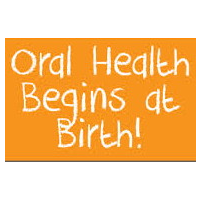Denti-Cal Enrollment Soars, While Dentists Flee—What Could Go Wrong?

Californians don’t like to help poor people get dental care they cannot otherwise afford. Only Mississippi Medicaid dentists get reimbursed less than Californians, a ranking that didn’t happen overnight. And it’s not just benign neglect, although state lawmakers didn’t bother raising the reimbursement rate for about a decade.
State lawmakers actively reduced rates 10% for children’s services in 2013 (since reversed) and totally eliminated adult services in 2009 (since partially reversed) as part of a slash-and-burn budgetary response to the Great Recession. The results of this public policy choice are predictable and, indeed, illustrated in a growing body of literature about how people fare without dental care and what the cost to society is.
California’s Department of Health Care Services (DHCS) made its contribution in an annual report (pdf) required by lawmakers when it calculated that, despite a 40% increase in the number of children enrolled in the Denti-Cal (Medicaid) program between 2009 and 2014, there were 14% fewer dentists willing to treat them.
Alicia Malaby, communications director at the California Dental Association told California HealthLine, “Based on the significant increase in beneficiaries covered and the decrease in the providers in the network during the same time period one can easily conclude that access to care is problematic in the Denti-Cal program.”
But the DHCS would beg to differ. Its introduction to “Medi-Cal Dental Services Rate Review” argues that it’s complicated: “A reimbursement rate and its relationship to beneficiary access is not a strict or linear one.” The report argues that a “multitude of factors” must be considered and addressed. Just raising the reimbursement rate won’t do, although the review shies away from drawing conclusions.
Jennifer Kattlove, senior director of programs at The Children's Partnership, didn’t buy that. “It's missing the most important piece of information—how rates affect access.”
A lot of children from low-income homes are not seeing dentists. The California State Auditor reported in December (pdf) that 56% of the 5.1 million children enrolled in Medi-Cal (California’s version of Medicaid) received dental care through the program in 2013. The Affordable Care Act (Obamacare) expanded the rolls of the insured but not necessarily access to doctors and dentists.
Five California counties lacked any dentists serving Denti-Cal patients, 11 had no dentists who were accepting new Denti-Cal patients and 16 had too few amenable dentists overall.
The audit said DHCS had failed to properly monitor the program chastised it for not doing the mandatory annual report it finally released this month. Unlike the DHCS, the auditor had no problem cutting through the issue’s complexity to conclude: “A primary reason for low dental provider participation rates is low reimbursement rates.”
Assemblyman Jim Wood told the Sacramento Bee back in April, when he and fellow Democrat Senator Richard Pan asked the independent Little Hoover Commission to study Denti-Cal and suggest ways to make it more effective, “These are the most vulnerable people in our society, and we’re judged on how we treat the most vulnerable people.”
Yes we are, and by now the verdict is pretty clear. It may be on appeal but the overwhelming evidence is that the California body politic doesn’t care that much about dental needs of low-income people.
–Ken Broder
To Learn More:
State's Rate Review Shows Fewer Dental Providers Take Medi-Cal Patients (by David Gorn, California HealthLine)
California’s Dental Program Gains Patients While Losing Dentists (by Kenny Goldberg, KPBS)
Efforts To Improve Denti-Cal Heat Up (by Hudson Sangree, Sacramento Bee)
Report Shows Denti-Cal Reimbursement Rates Lagging (California Dental Association)
335 California Dental Providers Post Suspiciously Amazing Medi-Cal Numbers (by Ken Broder, AllGov California)
Medi-Cal Dental Services Rate Review (California Department of Health Care Services) (pdf)
- Top Stories
- Controversies
- Where is the Money Going?
- California and the Nation
- Appointments and Resignations
- Unusual News
- Latest News
- California Forbids U.S. Immigration Agents from Pretending to be Police
- California Lawmakers Urged to Strip “Self-Dealing” Tax Board of Its Duties
- Big Oil’s Grip on California
- Santa Cruz Police See Homeland Security Betrayal in Use of Gang Roundup as Cover for Immigration Raid
- Oil Companies Face Deadline to Stop Polluting California Groundwater





